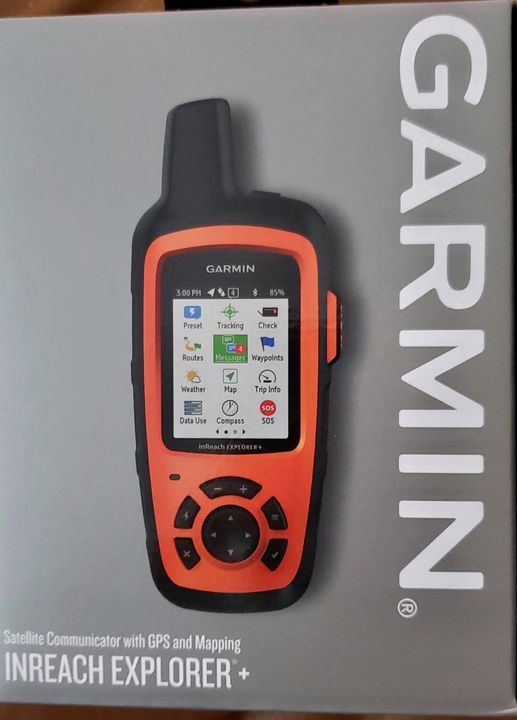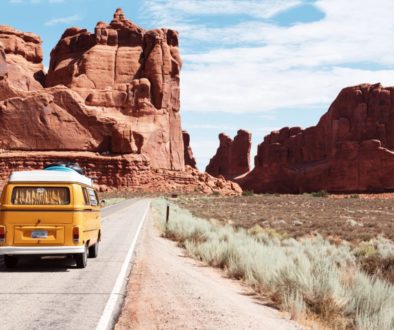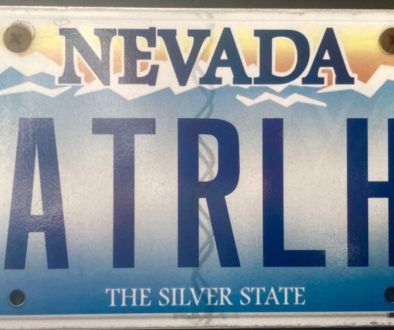How To Survive And Enjoy Your Next Road Trip PT.1

During the past 3 months, I have traveled over 5,100 miles. This is not uncommon for me. I thoroughly enjoy researching, planning, and going on destination adventures. The process for preparing for these adventures is far more important than the arrival to the destination in many respects. Think about that. If your not prepared for the road trip, you’ll be more likely to waste time, money and energy which could potentially put yourself at risk of accident or injury and ruin your adventure, just because you’re tired and unprepared for your journey. I’m not saying you should plan every step of the way and to throw spontaneity out the window when you’re on an epic road trip, rather be prepared and vigilant so you can truly enjoy yourself with a healthy margin of safety – If your traveling off the beaten path or driving long distance these tips will help you enjoy the drive.
Here’s what I have learned:
BEFORE YOU GO – make sure your vehicle has been serviced and that you’ve checked all your vehicles fluid levels. This includes checking:
- your engine bay to make sure everything looks normal
- tire pressure and tread on all tires, including your spare
- oil level
- coolant level
- transmission fluid
- windshield wiper fluid
- Recovery and Road hazard safety equipment are in working order
- All lights on your vehicle are functioning properly inspect battery
My PRO TIP would be to take your vehicle in for an oil change and have the shop do a multi-point inspection of the above list. (I’m not a mechanic)
- Ensure all onboard safety equipment functions properly.
- Fresh batteries for your flashlight(s)
- Do you need to restock your first aid kit?
GET INFORMED of the COVID situation
- Before leaving for your road trip review the CDC’s COIVD-19 Tracker: https://covid.cdc.gov/covid-data-tracker/ and be aware of the trends, requirements and possible restrictions. Monitor this information along the way in case anything changes.
- Have an inventory of masks and disinfectant wipes with you and be sure to continuously disinfect your hands and frequently touched surfaces. When encountering individuals outside of your party wear a mask
- Avoid high risk exposer areas refer to CDC link above
EQUIPMENT
- Prior to leaving on your trip, check for updates for your devices. update maps on your cell phone, iPad/tablet or GPS units. Save these maps for offline use should they be needed. You will want to download the maps so that you’ll have access to the map data even if you lose your cell service. Make sure your batteries and power banks charged and you have spare charging cable.
- Go through ALL your gear and make sure everything is in proper working order. SIMPLE but you have to actually do it!
- If you’re going skiing, biking etc. create a list of what gear you will need on your trip and pack accordingly. Pack your gear in a way that the most frequently used gear will be most assessable.
Pack Smart
It all starts with emergency supplies, first aid, food, water, working flashlight, USB backup battery, roadside emergency and recovery gear, clothing for the climate you will be in and ability to layer for extreme unexpected weather. IT HAPPENS!!! and not just for you but your entire crew. Medicines are also often over looked make sure you bring your prescriptions for the duration plus a few days. Often over looked is a cooler bring one! you will be glad you did. It makes a good trip great by having cool beverages and fresh perishables. When you pack smart you will find you will be more comfortable over long distances and less inclined to make unnecessary stops and save money as a result. Lastly, I cant stress enough Bring extra masks and disinfectant wipes and USE them! The bottom line when taking a long road trip is be prepared and Create a check list before you pack and check it twice. You will find so much more comfort and peace of mind knowing what you have and having what your need. The result will be more time to spend at enjoying your adventure. This is just an example of my basic road trip essentials. The destination and climate will also change things up a bit… You get the drift.
FOOD, BEVERAGES & WATER
- Typically, I pack a large cooler with beverages and snacks . I like to freeze bottles of waters for the bottom of the cooler so I can drink them as they melt. I also pack juices, sodas, protein drinks and fruit.
- Carry a smaller cooler for beverages and snacks you’ll want to get to easily and place it right behind the front seat if possible. You can always add ice/ice packs to keep things cool. Typically, hotel’s you’re staying at will provide you with free ice. Bring a sturdy bag for the ice. If your camping make sure you have plenty of ice and a way to keep it clean while in the cooler so you can enjoy it in your drinks.
- Contigo makes great cups for keeping your coffee and cold beverages at the appropriate temperature. If you’re a road traveler like me, invest in a couple of them. You won’t regret it!
- You can eat delicious healthy food and save a fortune on fast food on a road trip with a little prep work!
PLAN AND SHARE YOUR ITINERARY
Now for me this is super important, many times I travel solo. So for safety and peace of mind, I make sure I have the fuel to get to were I am going with plenty of reserve and communications just in case assistance is needed for recovery. Weather on your way to the back county or a major city its a very good idea to let someone you know where and when you will be. Including approximant arrival, and departure times to and from your destinations.
Plan you trip before hand and understand time and fuel requirements, travel distances, driving time and rest periods into your schedule. Ultimately you want to cover as much driving time as you can comfortably so you can spend more time at your destination . Keeping in mind you need to factor your driving time and rest periods. It is critical that you get good sleep. You want to be refreshed and good to go for your adventures. Be sure to have a paper map on hand to back up your GPS and stay in communication with your point of contact back home. There are many ways to do this; just send a text when you arrive or depart a location. A text is quick and easy and non intrusive for all involved. But what if your outside cell reception? This is were we take on another important layer. When I travel I use my Garmin GPS, paper maps, and my iPhone with google Maps. THIS IS IMPORTANT: download google maps for offline use before your trip and while connected to Wi-Fi, the maps can sometimes be large files try to do this out in the field and your screwed . When cell reception is lost the offline maps will still function! SWEET!
How To Use Google Maps Offline Trail Navigation Tip
You can also use a GPS to send tracking breadcrumbs to a friend or family member giving them the ability to monitor your adventure in real time (it can be fun) .  I personally use and highly recommend The Garmin InReach Explorer+ GPS Satellite communicator and Emergency SOS Beacon. Whew that’s a lot, but you get it all that in one device! and the peace of mind is amazing not only do you have a GPS with full tracking. You have a satellite communicator that will allow you to share your location and send/receive text messages from anywhere on earth and If that wasn’t enough it also is GEOS Global Emergency SOS beacon built in! When activated (this is for serious situations ONLY) search and rescue will be on there way to your position any where on Earth. It dose require a subscription but is much cheaper and more versatile than a satellite phone. Bottom line this device kicks ASS and the peace of mind is priceless. This concludes part 1 of “How to survive and enjoy your next road trip” please share your thoughts and ideas in the comments. In part 2 we will be putting it all together with tips on being a better and safer driver.
I personally use and highly recommend The Garmin InReach Explorer+ GPS Satellite communicator and Emergency SOS Beacon. Whew that’s a lot, but you get it all that in one device! and the peace of mind is amazing not only do you have a GPS with full tracking. You have a satellite communicator that will allow you to share your location and send/receive text messages from anywhere on earth and If that wasn’t enough it also is GEOS Global Emergency SOS beacon built in! When activated (this is for serious situations ONLY) search and rescue will be on there way to your position any where on Earth. It dose require a subscription but is much cheaper and more versatile than a satellite phone. Bottom line this device kicks ASS and the peace of mind is priceless. This concludes part 1 of “How to survive and enjoy your next road trip” please share your thoughts and ideas in the comments. In part 2 we will be putting it all together with tips on being a better and safer driver.
Cheers, Nomad


